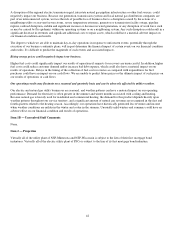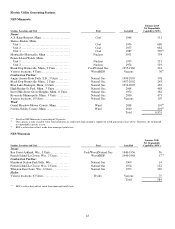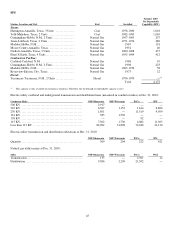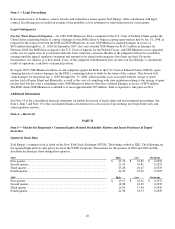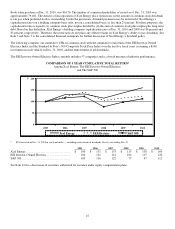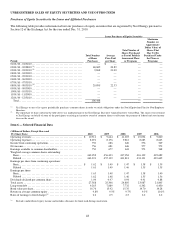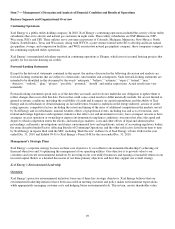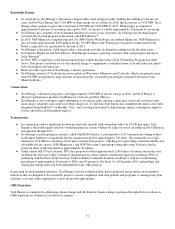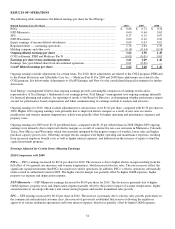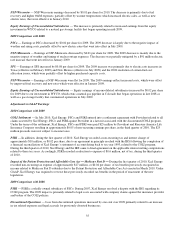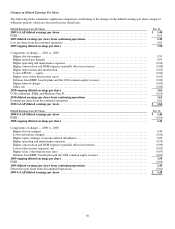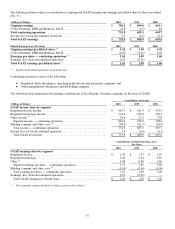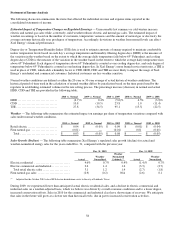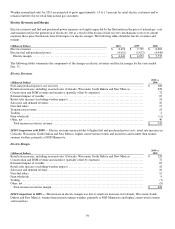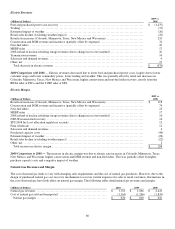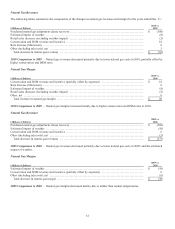Xcel Energy 2010 Annual Report Download - page 62
Download and view the complete annual report
Please find page 62 of the 2010 Xcel Energy annual report below. You can navigate through the pages in the report by either clicking on the pages listed below, or by using the keyword search tool below to find specific information within the annual report.
52
Xcel Energy adopted a methodology for calculating CO2 emissions based on the recently issued reporting protocols of The
Climate Registry. Xcel Energy is a “founding reporter” under The Climate Registry. As third-party CO2 reporting protocols
continue to evolve, Xcel Energy expects additional changes in reporting methodology and reported CO2 emissions. Starting in
2011, Xcel Energy will also report GHG emissions to the EPA under the agency’s newly adopted GHG reporting rule. Certain
REC transactions include a transfer of environmental attributes. It is not clear whether future GHG reporting regulations could
require reporting of CO2 emissions for such REC transfers; current rules for EPA’s Greenhouse Gas Reporting Program do not
address REC transactions.
Based on The Climate Registry’s current reporting protocol, Xcel Energy estimated that its current electric generating portfolio,
which includes coal- and gas-fired plants, emitted approximately 60.2 million and 60.1 million tons of CO2 in 2010 and 2009,
respectively. Xcel Energy also estimated emissions associated with electricity purchased for resale to Xcel Energy customers
from generation facilities owned by third parties. Xcel Energy estimates that these third-party facilities emitted approximately
20.3 million tons of CO2 in 2010. Estimated total CO2 emissions, associated with service to Xcel Energy electric customers,
increased by 0.7 million tons in 2010 compared to 2009. The increase in emissions was associated with an increase of 1.5 million
MWh of generation. However Xcel Energy’s total emissions have a cumulative decrease of 55.0 million tons since 2003.
In 2010, Xcel Energy completed the acquisition of the Blue Spruce Energy Center and Rocky Mountain Energy Center. Since
Xcel Energy previously purchased the energy from these facilities, the combined CO2 emissions from owned and purchased
generation will not change. The CO2 emissions from these facilities will now be included in emissions of owned assets. In 2010,
Xcel Energy’s ownership share of Comanche Unit 3 resulted in CO2 emissions of approximately 2.1 million tons, and we estimate
that Comanche Unit 3’s 2011 emissions will be approximately 3.0 million tons. Xcel Energy plans to implement clean resource
development and conservation plans that will result in overall reductions in Xcel Energy’s CO2 emissions, including PSCo’s plan
under the CACJA, both in absolute terms and per KWh of electricity produced.
State Resource Plans
As a result of our resource plans, Xcel Energy would:
● Increase overall system wind capacity from approximately 3,432 MW at the end of 2010 to over 5,000 MW by 2015;
● Extend power purchases and exchange agreements with Manitoba Hydro through 2025 for NSP-Minnesota;
● Continue expansion of our customer energy efficiency and conservation programs;
● Retire and replace several existing coal-fired electric generation facilities with natural gas or combined-cycle generation
units at PSCo and NSP-Minnesota;
● Install several SCRs for controlling NOx emissions and a scrubber for controlling SO2 emissions on specified units at
PSCo;
● Improve the efficiency and reduction of CO2, mercury, SO2 and NOx emissions at several existing fossil plants at NSP-
Minnesota and PSCo; and
● Upgrade the capacity of existing nuclear facilities at NSP-Minnesota.
These plans are designed so that, depending on fuel, commodity and other assumptions, Xcel Energy would maintain a reasonably
priced product and continue to provide reliable power to our customers. At the same time, the plans would result in a significant
reduction in GHG emissions. Overall, Xcel Energy estimates that, by implementing these plans, we would achieve a GHG
reduction of 20 percent below 2005 levels by 2020.
Achieving Financial Objectives
Xcel Energy’s financial objectives have three phases 1) obtaining legislative and regulatory support for large investment
initiatives, 2) investing in the utility business and 3) earning a fair return on utility system investments.
Obtaining Legislative and Regulatory Support
The first phase is obtaining legislative and regulatory support for large investment initiatives, prior to making the investment. To
avoid excessive risk, it is critical that Xcel Energy reduce regulatory uncertainty before making large capital investments. Xcel
Energy accomplished this through both the Minnesota and Colorado resource plans. The CPUC provided for recovery on CWIP
in rate base in each rate case and deferred accounting of accelerated depreciation costs related to the CACJA. Xcel Energy
obtained approval for several transmission lines through CONS in 2009 and 2010 for NSP- Minnesota, and expects to file an
application for SPS in March 2011. In addition, various jurisdictions adopted legislation allowing for rider recovery of
investments in renewable energy.


